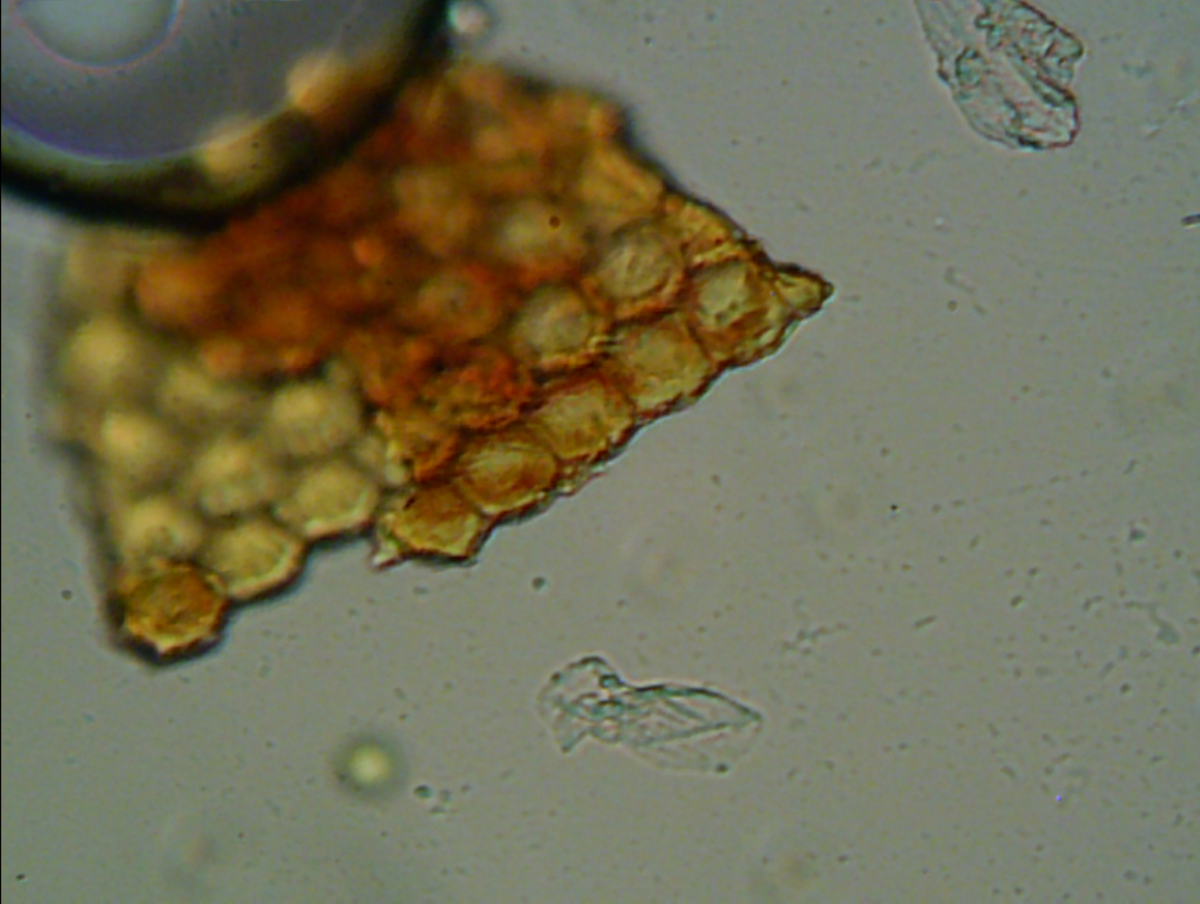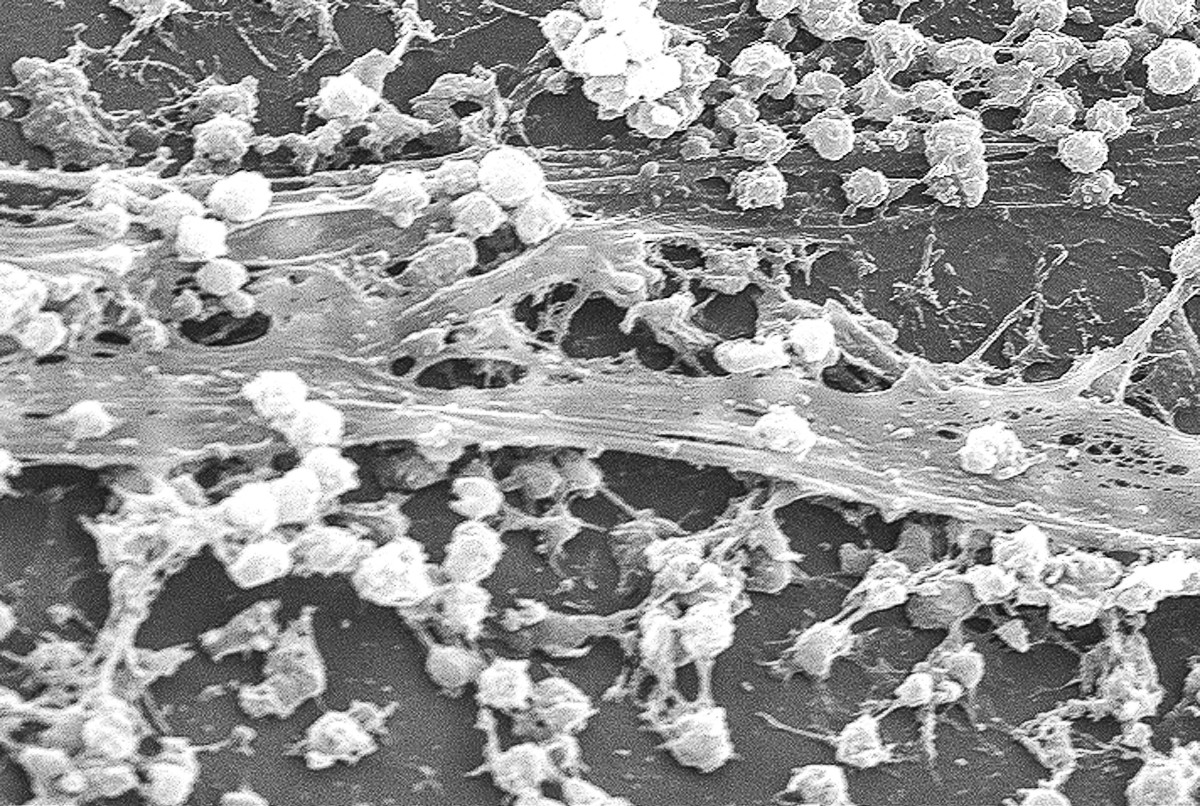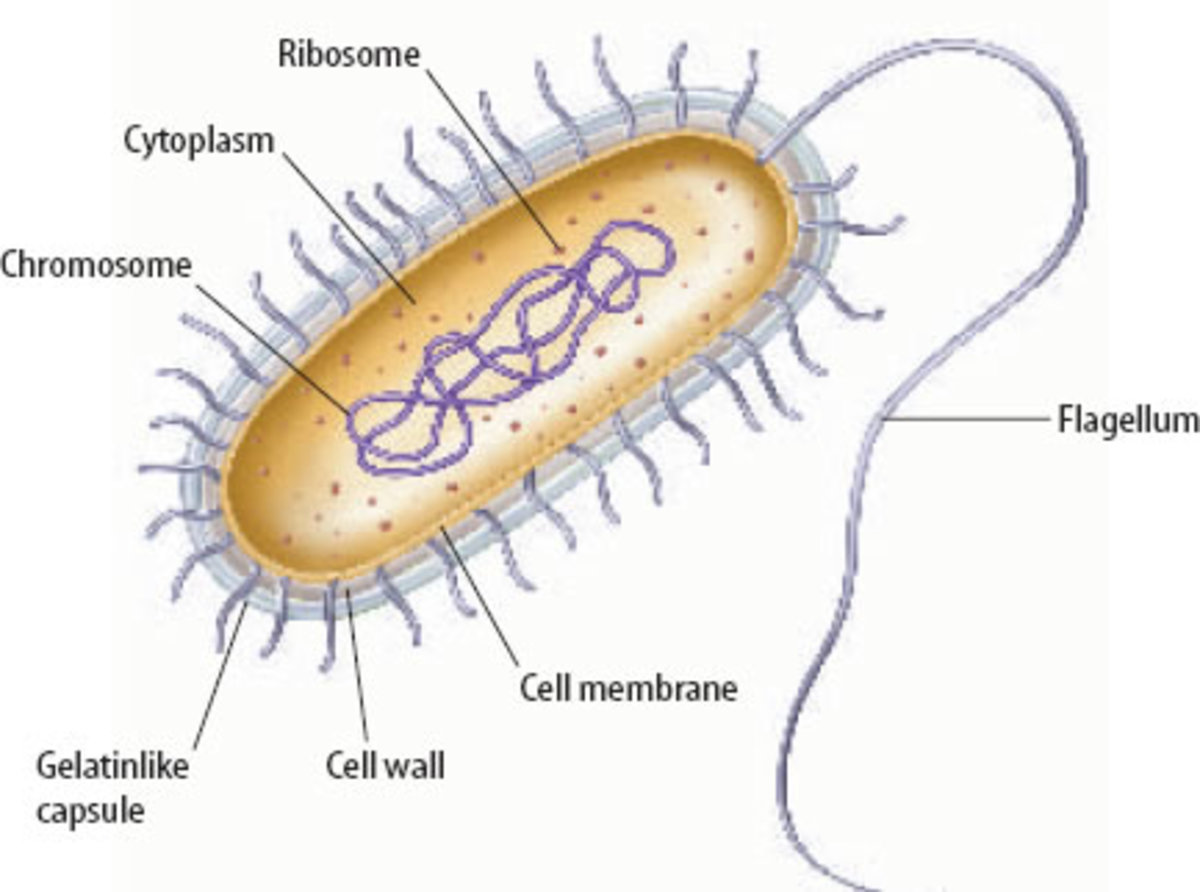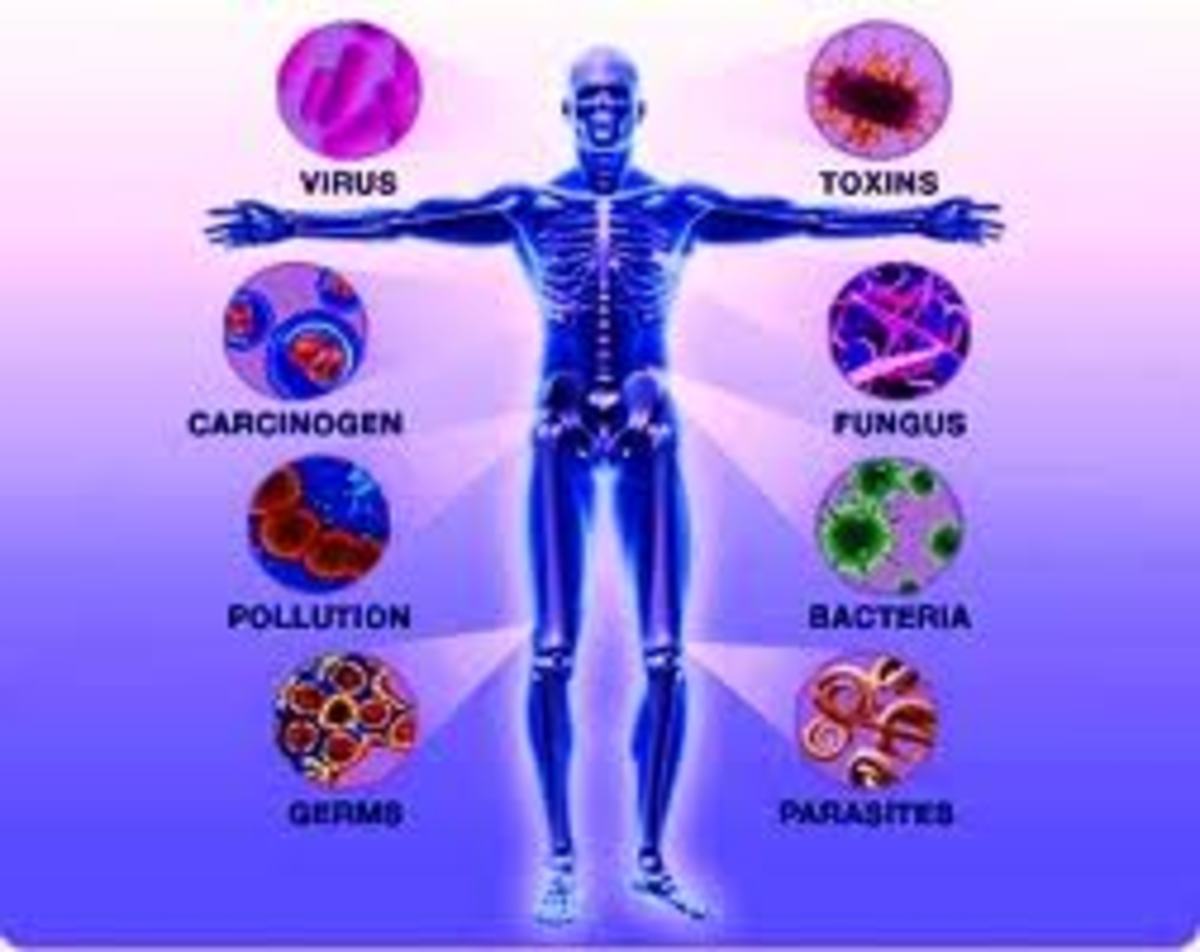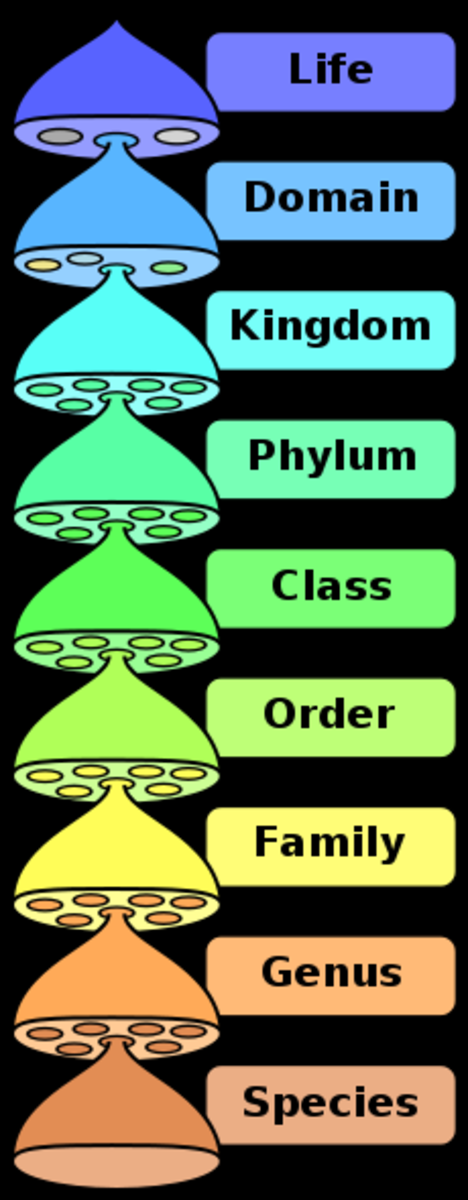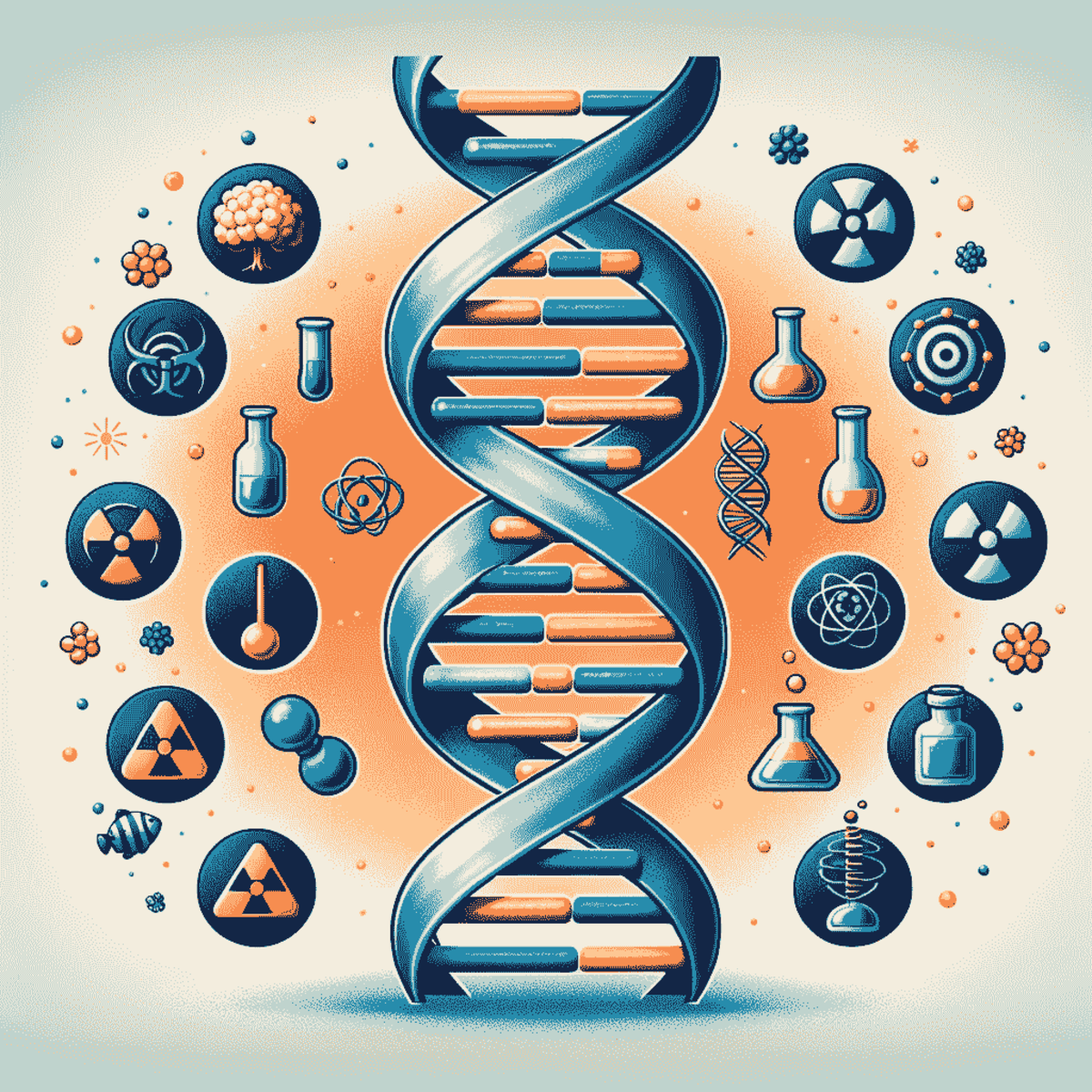Bacteria - Types, Effects, and Uses
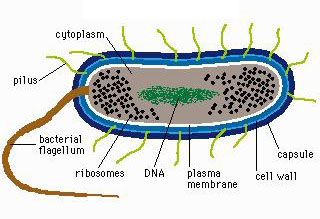
Bacteria, which is in the kingdom of the moneras, is in the phylum of Schizomycopohyta, are being everywhere. Many of them live in or on other organisms. Most bacteria have one of the three mayor shapes. Spherical shaped bacteria are called cocci, the rod-shaped bacteria are bacilli, and the ones that has a shape of a spiral are called spirilla. Bacteria are unicellular, but many exist in pairs, clusters, or chains with each cell of such a group as an independent organism. The avarage diameter of a coccus bacterial cell is only about one micrometer. Most bacterial cell are enclosed by cell walls like plant cells. The wall protects the cell and helps maintain an osmotic balance. (This is a kind of dynamic equilibrium. It occurs when the equal amount of water enters and leaves the cell between the bacteria and its environment.) Penicillin is effective against many bacteria, because it hinders the production of murein needed to make new cell walls. Thus the bacteria cannot reproduce.
Often the cell wall is surrounded by an outer slime capsule which may protect the cell. Some bacteria have flagella and can move by "wiggling". Each bacterium has one main chromome. In addition, bacteria contain smaller, circular segments of DNA called plasmids. Replication of plasmids is independent of the main chromosome. Other plasmids never join with the chromosome. Many of these plasmids carry genes which make the bacterium resistant to antibiotics. When the cell in which they are located comes into contact with an antibiotic, these plasmids may replicate many times. This replication aids the survival of the bacterium. Dispite of their small size and simple structures, bacteria can survive in a wide variety of environments. One reason for their success in many places is that they vary in their metabolic reactions. Most bacteria require oxyen and carry on aerobic respiration which is a respiration occurs in the presence of oxygen. Some can carry on anaerobic respiration (the respiration in the absence of oxygen) and so they can live without oxygen. Others cannot live in the presence of oxygen and carry on only anaerobic respiration.
Another reason for the success of bacteria in many places is that they differ in how they get or make their food. Many of the bacteria are consumes, but there are also being some that are producers. Most bacteria are heterotrophic and live as parasites or as saprophytes. The bacteria that live inside other organisms are often cause disease. Some bacteria that live inside other organisms are necessary for the health of the organism. You could not even survive without some kinds of the bacteria in your body.
As I have already mentioned, some forms of a bacteria are photosynthetic. These bacteria contain a form of chlorophyll not found in other autotrophs. They do not use water or give off oxygen either in their making of food. They are not containing true chloroplast either.
Another group of bacteria which I also had had mentioned before, can derive energy from inorganic materials such as iron sulphur, and nitrogen compounds. The energy is used to make carbohydrates. The process is called chemosynthesis.
Another reason of the success of bacteria in such different kinds of environments is that they exist in two forms. One of these forms is the active bacteria which reproduces. Usually bacteria reproduce asexually (by simple cell division), but they can reproduce sexually too.
The other form in which bacteria exist is dormant spore. When living conditions are not good for them, they form protective walls. Such an organism is an inactive, highly resistant structure called an endospore. Bacteria can withstand extreme temperatures when endospheres are formed, they can survive temperatures from about -250 degrees Celsius to over 100 degrees Celsius.
An autoclave is a kind of equipment used in labs and hospitals to kill bacteria. It sterilizes glassware and other utensils by exposing them to steam under high pressures. The temperature of the steam under pressure is raised higher than 100 degrees Celsius so that most spores would be killed in an autoclave. To kill all the bacteria, the process must be repeated several times. Each time the spores that have germinates are killed.
Bacteria have very important roles in nature, but it also have some very important jobs in human economy as well. Most of the bacteria are decomposers which is required to break down the organic materials of dead organisms and the organic wastes into its basic inorganic parts. Carbon dioxide, water, and nitrogen and sulfur compounds are some of the most important materials returned to the soil and the atmosphere. These materials form organic material once again in other organisms Such cycling of materials could not occur in the absence of certain bacteria.
Bacteria are used in many precesses in the dairy industry too. Products such as yogurt and buttermilk are made by adding certain bacteria to milk. The bacteria thrive and multiply rapidly in the milk and secrete subtances which flavor the milk. Production of cheese depends on a particular bacteria which cause the milk products to turn solid. Cream is converted to butter as a result of bacterial action. Cream is soured by a flavor of butter result from chemicals produced by other bacteria. Bacteria are also indirectly involved in the production of milk in the cow. These bacteria grow in the rumen of the cow and help break down plant materials from which the cow gets its requirements.
Bacteria are used in other industries too. Bacteria can convert alcohol to vinegar. Alcohol is changed to acetic acid which gives the vinegar its odor. Some bacteria are used to break down material holding together the fibers of cellulose in plants such as flax and hemp. The fibers can then be used in making linen or rope. Preparing skins for the making of leather also involves bacteria. Many of the antibiotics that exist today are produced by bacteria. Those antibiotics are used to kill other bacteria.
One of the most important and promising uses of bacteria today is in the field of genetics. Using techniques that recombine DNA from different sources, bacteria have been produced that can make a variety of compounds.
While many bacteria are very helpful, still others are harmful and dangerous. They are pathogens or disease-causing organisms. Pathogens cause disease in plants, animals, humans, and in other organisms. Their activities may result in illness, death and distructions of crops. Diseases caused by pathogens are called infectious diseases. Infectious diseases can be spread from organism to organism.
Many bacteria have been found that are the cause of infectious diseases in humans and animals. Among these diseases caused by bacterial actions are pneumonia, bubonic plague, pertussis strep throat, and maningitis. Several sexually transmitted diseases, such as syphilis and gonorrhea, are also caused by these certain bacteria.
Bacteria cause plant diseases too, such as pear blight and fire blight. Bacteria may cause the rotting or wilting of a variaty of plants. Some cause galls, abnormal swellings, to occur in plant tissues.
Infectious diseases may spread from one organism to another in several ways. Some diseases are airborne. Microorganisms are carried through the air on small droplets produced when an infected organism sneezes or coughs. Other diseases are water borne. They spread by the drinking of water contaminated by sewage containing human wastes.
Still other diseases are spread by direct contact with an object or living thing in or on which microorganisms are located. Sexually transmitted diseases are spread by sexual intercourse. Some microorganisms are transmitted by arthropods such as lice, flies, ticks, and mosquitoes. For example, bubonic plague is transmitted by the rat fleas. Often the microorganism enters the body when the arthropod bites or pierces the skin or and animal.
Under ideal conditions most bacteria are able to grow to full size and divide every thirty minutes. If these conditions persisted, in about thirty generations(fifteen hours) one bacterial cell would have become about four billion cells. In less than twenty four hours the mass of bacterial cells would weigh over two thousand tons. In another day there would be billions of tons of bacteria.Within a week the bacteria would weigh more than the earth.
Normally bacteria reproduce by simple cell division. This asexual reproduction does not require mitosis. After the replication of the bacterial chromosome and the separation of two daughter chromosomes, an invagination of the plasma membrane forms daughter cell. Some bacteria can complete a cell division in nine minutes. Following about ten minutes of growth under ideal conditions, these cells will be full-size and ready to divide again.
As you can see now bacteria is really something that we should take serious.


